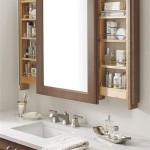Antique Framed Mirrors: A Reflection of History and Style
Antique framed mirrors offer more than just a reflection; they provide a glimpse into the past, showcasing the artistry and craftsmanship of bygone eras. These decorative pieces can elevate a room's aesthetic, adding a touch of history and elegance to any space. Understanding the nuances of antique framed mirrors, from their construction to their historical context, allows for informed collecting and appreciation.
Identifying Antique Mirrors
Authenticating antique mirrors requires careful examination of several factors. The glass itself offers clues; antique mirrors often exhibit slight imperfections, waviness, or a subtle gray or silvery tint due to the mercury backing used in older manufacturing processes. Modern mirrors, typically backed with aluminum, tend to have a clearer, more perfect reflection. Examining the frame is equally vital. Hand-carved details, aged patina, and the type of wood used can all point to a mirror's age and origin. Consulting with a reputable antique dealer or appraiser can provide further verification and expert assessment.
Frame Styles and Materials Through the Ages
The frame of an antique mirror is often its most defining feature, reflecting popular styles and materials of its time. 18th-century frames often featured ornate carvings, gilded details, and intricate designs influenced by Rococo and Neoclassical styles. The Victorian era saw the rise of elaborate gesso frames, often incorporating floral motifs, shell designs, and dark, richly colored finishes. Later, Art Deco and Art Nouveau styles brought geometric patterns and stylized natural forms into frame design, often using materials like ebony and chrome. Understanding these stylistic trends assists in dating and categorizing antique mirrors.
The Evolution of Mirror Making
The history of mirror making is a fascinating journey through technological advancements. Early mirrors were made from polished metal, such as bronze or obsidian, offering a less clear reflection than later glass mirrors. The development of glassblowing techniques led to the creation of convex mirrors in the 13th century. The process of coating glass with a thin layer of metal, initially mercury and later silver, revolutionized mirror production. This advancement, coupled with advancements in glass manufacturing, led to the creation of larger, clearer mirrors, transforming them from luxury items to common household objects.
Caring for Antique Framed Mirrors
Preserving the beauty and integrity of antique framed mirrors requires careful handling and maintenance. Avoid harsh cleaning chemicals, which can damage the frame's finish or the delicate silvering on the mirror. Instead, use a soft, damp cloth for dusting and cleaning. Extreme temperature fluctuations and high humidity levels should be avoided, as they can cause the mirror's backing to deteriorate or the frame to warp. When moving an antique mirror, always support it from the back and avoid putting pressure on the glass. Consulting with a professional conservator is recommended for significant damage or restoration work.
The Value of Antique Framed Mirrors
Several factors contribute to the value of an antique framed mirror. Rarity, condition, age, and historical significance all play a role. Mirrors with provenance, such as documented ownership history or connections to notable individuals or events, can command higher prices. The quality of the frame's craftsmanship and the materials used, such as rare woods or intricate carving, also influence value. Similarly, the size and condition of the mirror itself, including the clarity and integrity of the reflective surface, contribute to its overall worth. Consulting with a qualified appraiser is essential for accurate valuation.
Incorporating Antique Mirrors into Modern Decor
Antique framed mirrors can seamlessly integrate into a variety of interior design styles. A large, ornately framed mirror can serve as a focal point in a living room or dining room, reflecting light and adding a sense of grandeur. Smaller antique mirrors can be grouped together to create a gallery wall, showcasing a collection of different styles and periods. In a bathroom, an antique mirror can add a touch of vintage charm, while in a hallway, it can create the illusion of space. The key to successful integration lies in balancing the antique piece with the overall aesthetic of the room, creating a cohesive and visually appealing design.
The Allure of Antique Mirrors
Antique framed mirrors possess a unique allure, capturing the essence of past eras and reflecting the artistry of generations. They are more than just functional objects; they are pieces of history, adding character and depth to any space. Whether one appreciates their historical significance, their decorative appeal, or the craftsmanship of their frames, antique mirrors offer a timeless elegance that continues to captivate.

Large Antique Framed Mirror 8337 Retrouvius

Antique Framed Mirror Wall With Antiqued Glass Black Frame Can Be Made In 1 2 Or 4 Large Decorative

Classic Antique Gold Baroque Framed Mirror Creta In 7 Sizes English Decorations Mirrors

Antiqued Elegance Wall Mirror Antique Farmhouse

Large Antique Gold French Framed Decorative Rococo Ornate Opera Wall Mirror Choice Of Size Premium Quality Free P

Antique Furniture Vintage French Antiques Mirror Gallery Wall

Large Mirror Lois Leaner Antique Full Length Gold Wall 5ft9 X 2ft10 175cm 84cm

Antique Gilt Framed Mirror Elsie Wolfe Wondrous Antiques Salvage Place

Antique Wooden Framed Mirror

Antique Mirror Wall Gallery Living Room Decor








